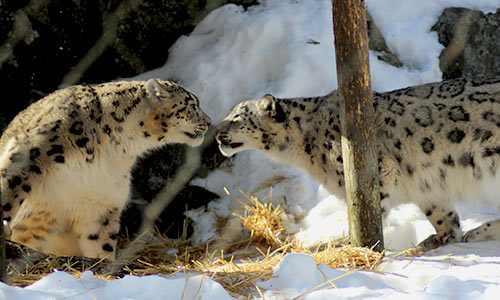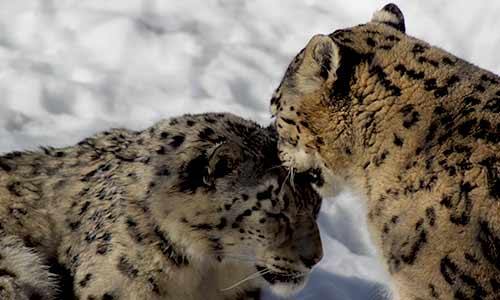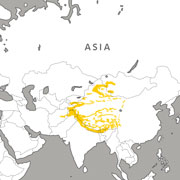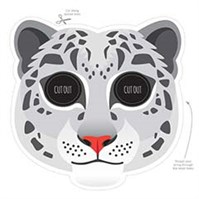Appearance:
Snow leopards have powerful legs and large, furry paws that act like snowshoes, allowing leopards to move easily and quietly along rocky cliffs and in deep snow. To live in such an elevated and harsh climate, snow leopards have a well-developed chest and enlarged nasal cavity to warm the cold air as it's breathed in.
With their thick, cream-colored coats and gray-black spots, snow leopards camouflage within their rocky habitat. Their tails are long (between 30-39 inches) and heavily furred, which helps them maintain balance. They’ll also wrap their tails around their faces to protect their nose and lungs. With the ability to leap down heights of 60 feet, snow leopards are said to be the most agile of the “big cats.”
Size:
Length: 3 to 4.5 feet
Weight: 60 to 120 pounds
Diet:
Snow leopards hunt marmots, pikas, hares, game birds, wild sheep, goats, deer and domestic livestock. They can kill prey up to three times their size.
Reproduction:
Snow leopards’ gestation lasts between 90 and 103 days, from April through June. The average litter size is three cubs, which weigh about 450 grams (1 pound) at birth. Cubs stay with their mother for over a year and are sexually mature by 2-3 years of age.
Behavior:
Snow leopards are diurnal (active during the day) solitary creatures except during mating season and the rearing of young. They den in rocky crevices or caverns and communicate with scent-markings and vocalizations like growls and yowls.
Habitat/Range:
Snow leopards inhabit the remote mountainous areas of Central Asia above 8,000 feet. They can be found in Afghanistan, Bhutan, China, India, Mongolia, Nepal, Pakistan, Tibet and five former republics of the Soviet Union.
Role in their habitat:
Besides humans, snow leopards are the top predators in their range. They're vulnerable due to the fur trade and loss of prey.
Median life expectancy:
In the Wild: Unknown.
In Captivity: 17 – 19 years
Conservation:
Due to harsh conditions and their remote habitats, snow leopard populations in the wild are difficult to assess. According to the International Union for Conservation of Nature (IUCN), the estimated population of snow leopards in the wild is between 4,000 and 8,000. Wild populations of snow leopards are threatened by extensive habitat loss, illegal hunting for hides or bones, declining prey species and agricultural conflict with humans.



















